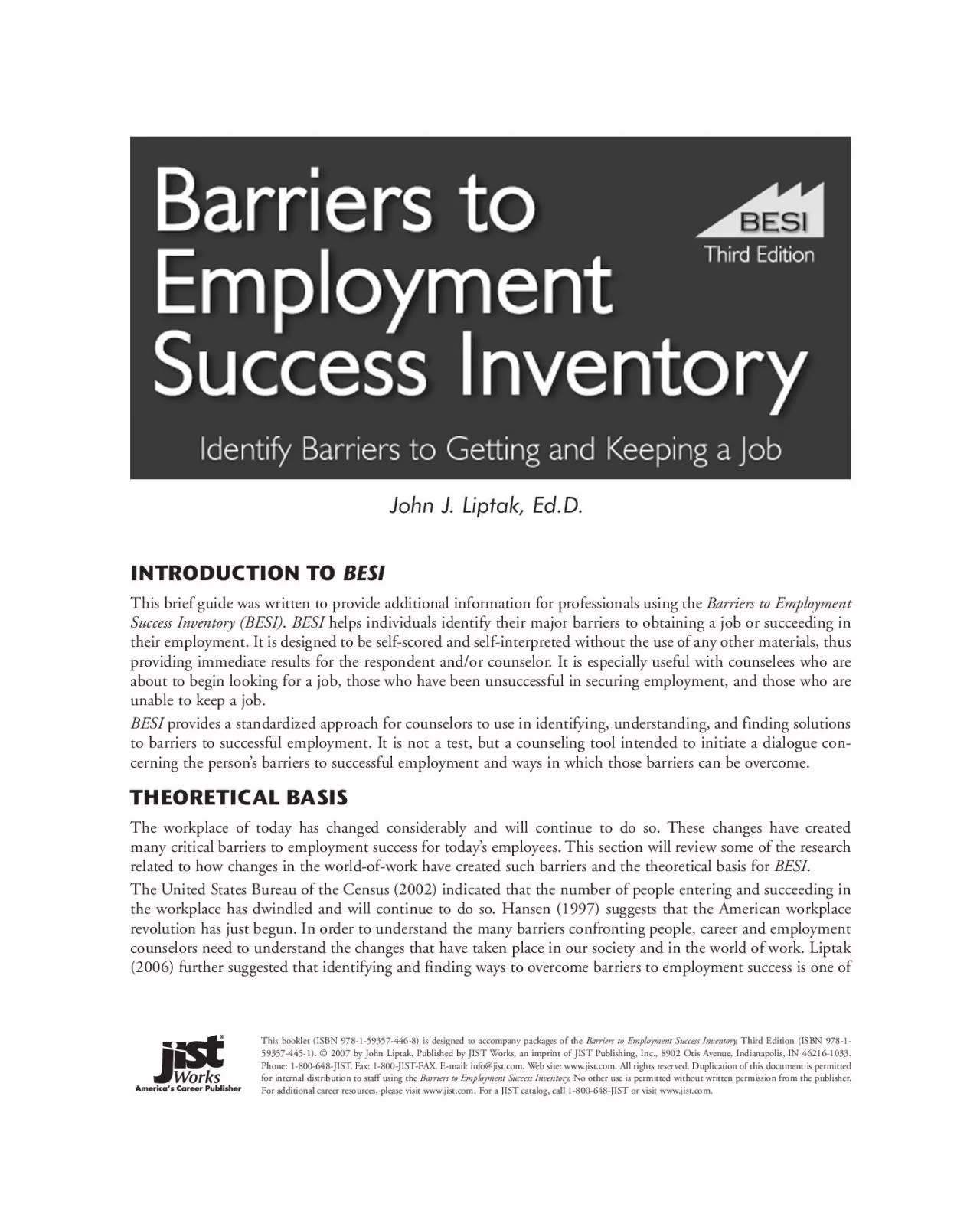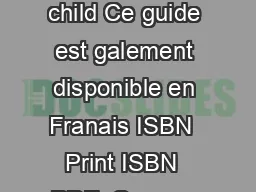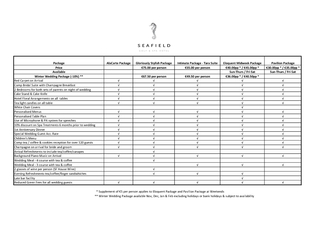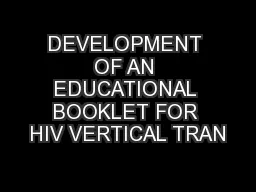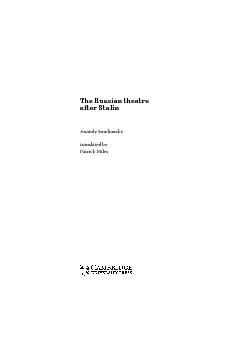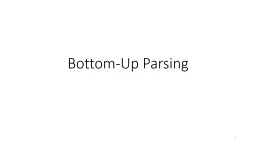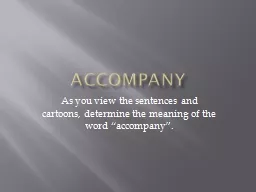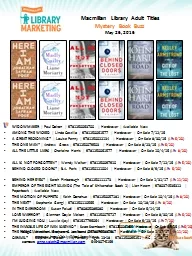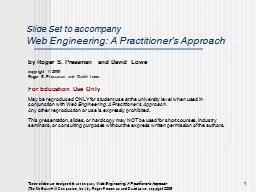PDF-This booklet ISBN 9781593574468 is designed to accompany package
Author : caitlin | Published Date : 2021-06-28
INTRODUCTION TO This brief guide was written to provide additional information for professionals using the Barriers to EmploymentSuccess InventoryBESIhelps individuals
Presentation Embed Code
Download Presentation
Download Presentation The PPT/PDF document "This booklet ISBN 9781593574468 is desig..." is the property of its rightful owner. Permission is granted to download and print the materials on this website for personal, non-commercial use only, and to display it on your personal computer provided you do not modify the materials and that you retain all copyright notices contained in the materials. By downloading content from our website, you accept the terms of this agreement.
This booklet ISBN 9781593574468 is designed to accompany package: Transcript
Download Rules Of Document
"This booklet ISBN 9781593574468 is designed to accompany package"The content belongs to its owner. You may download and print it for personal use, without modification, and keep all copyright notices. By downloading, you agree to these terms.
Related Documents

